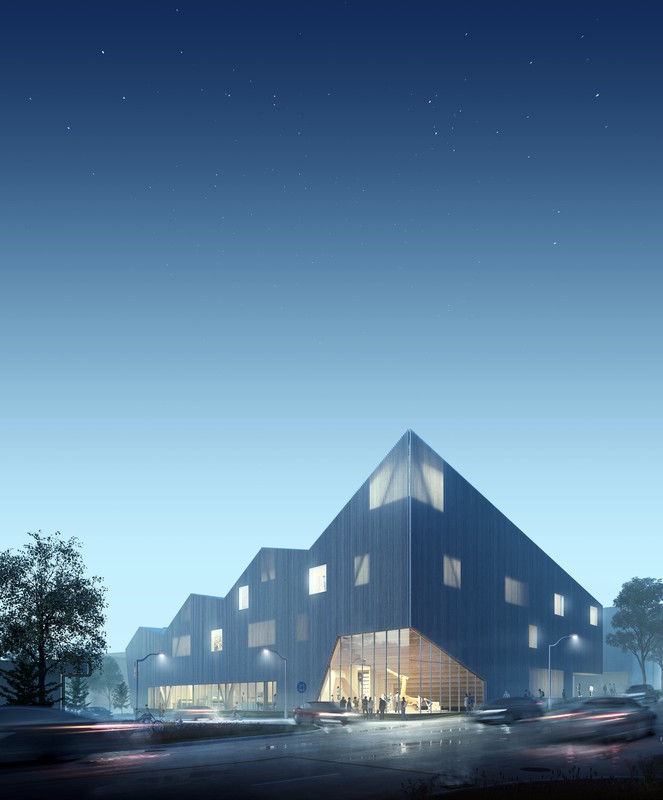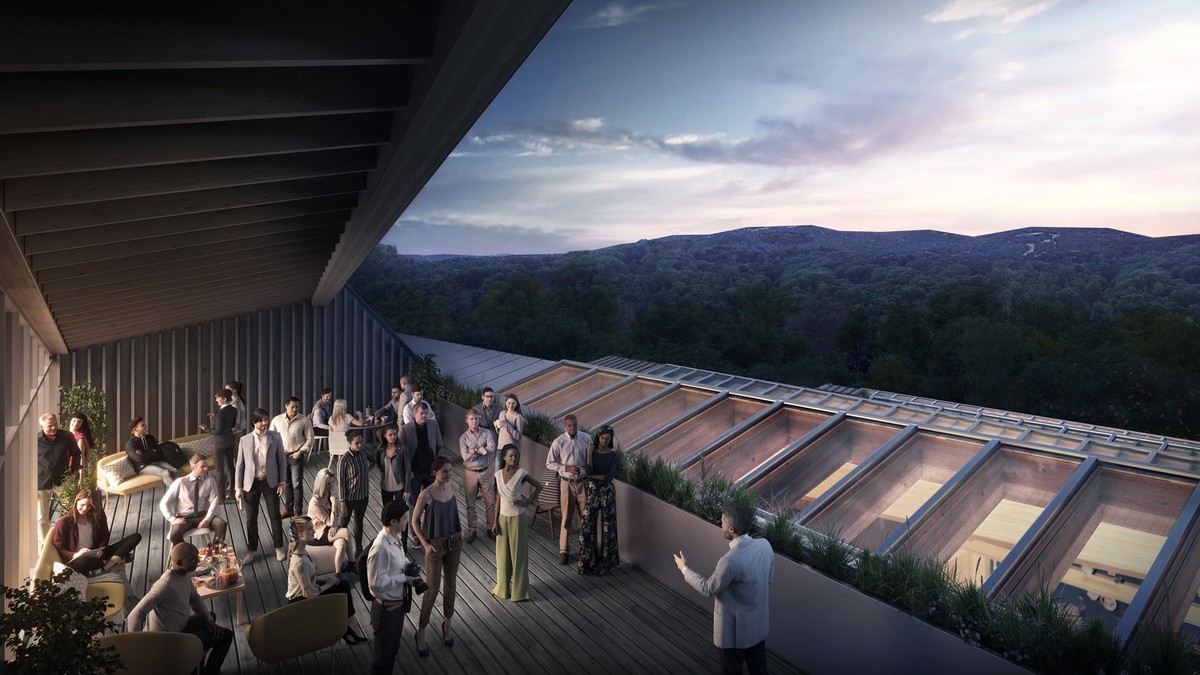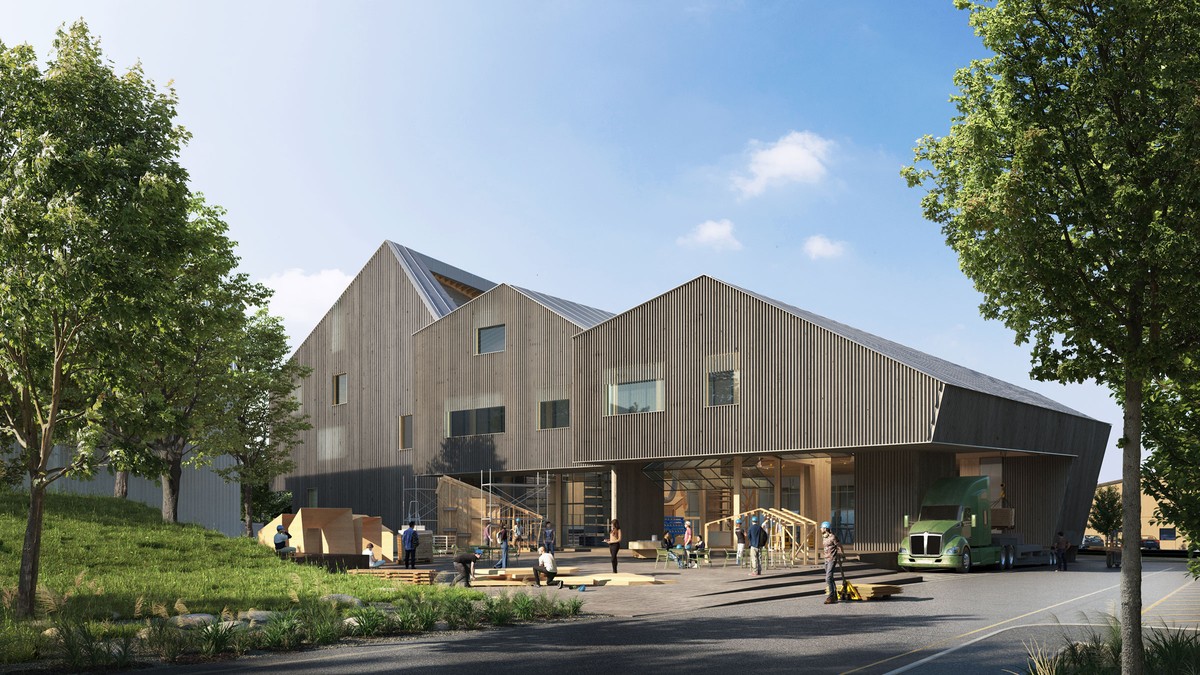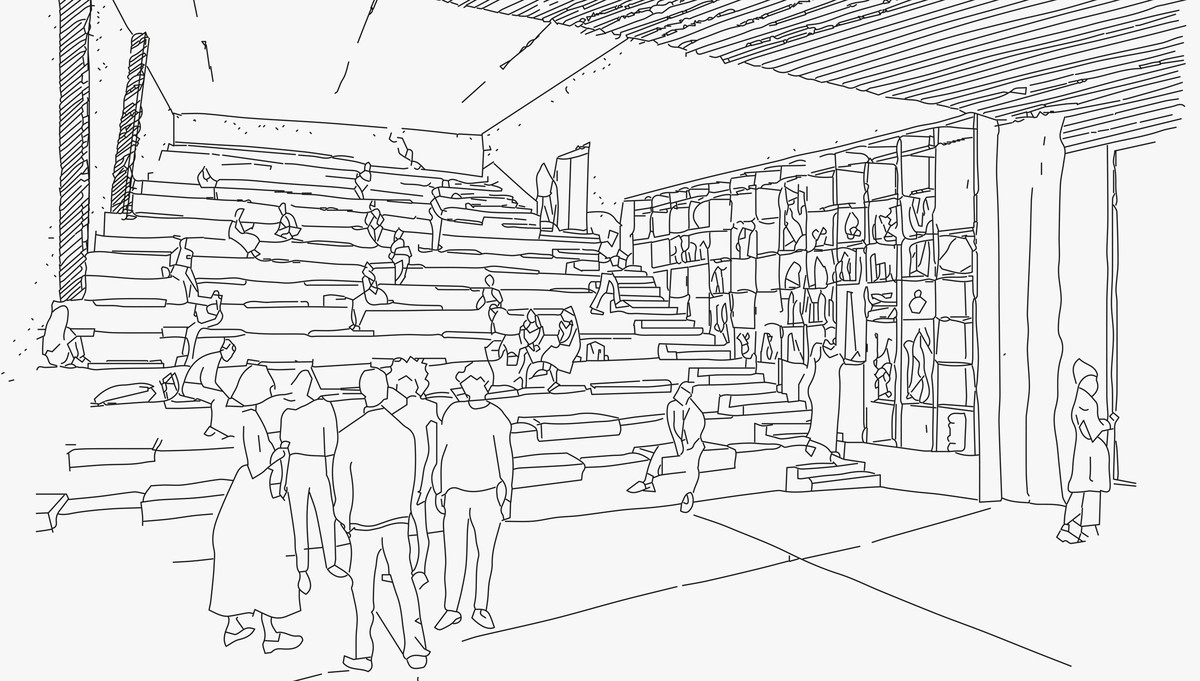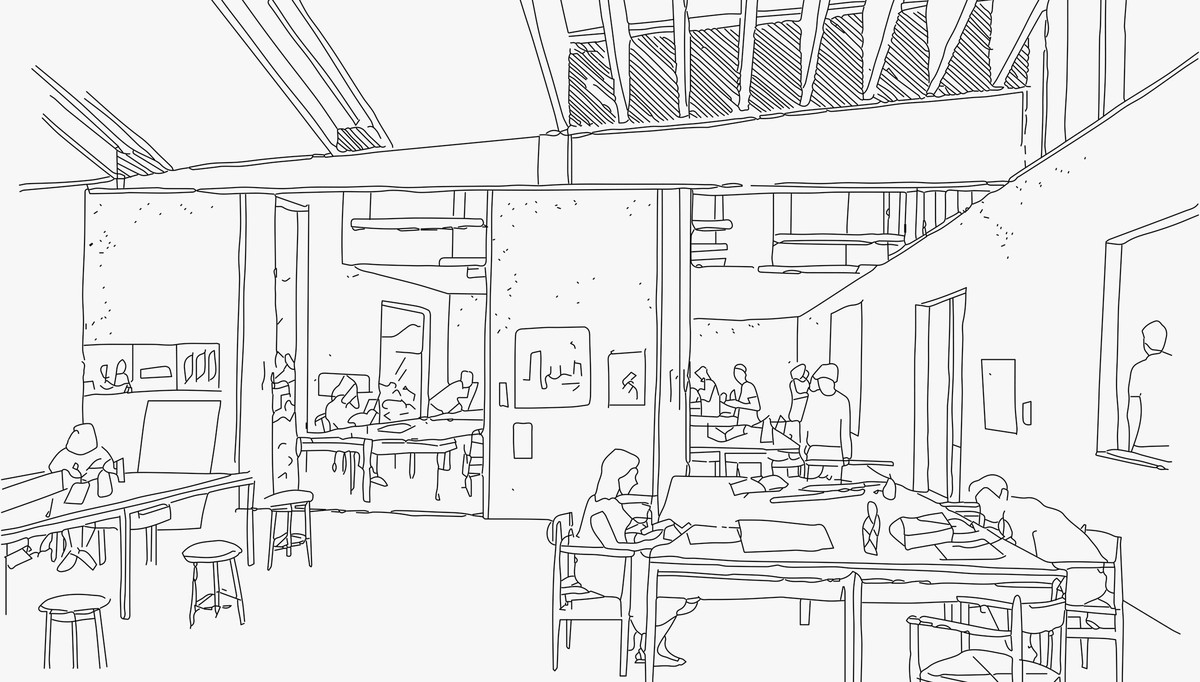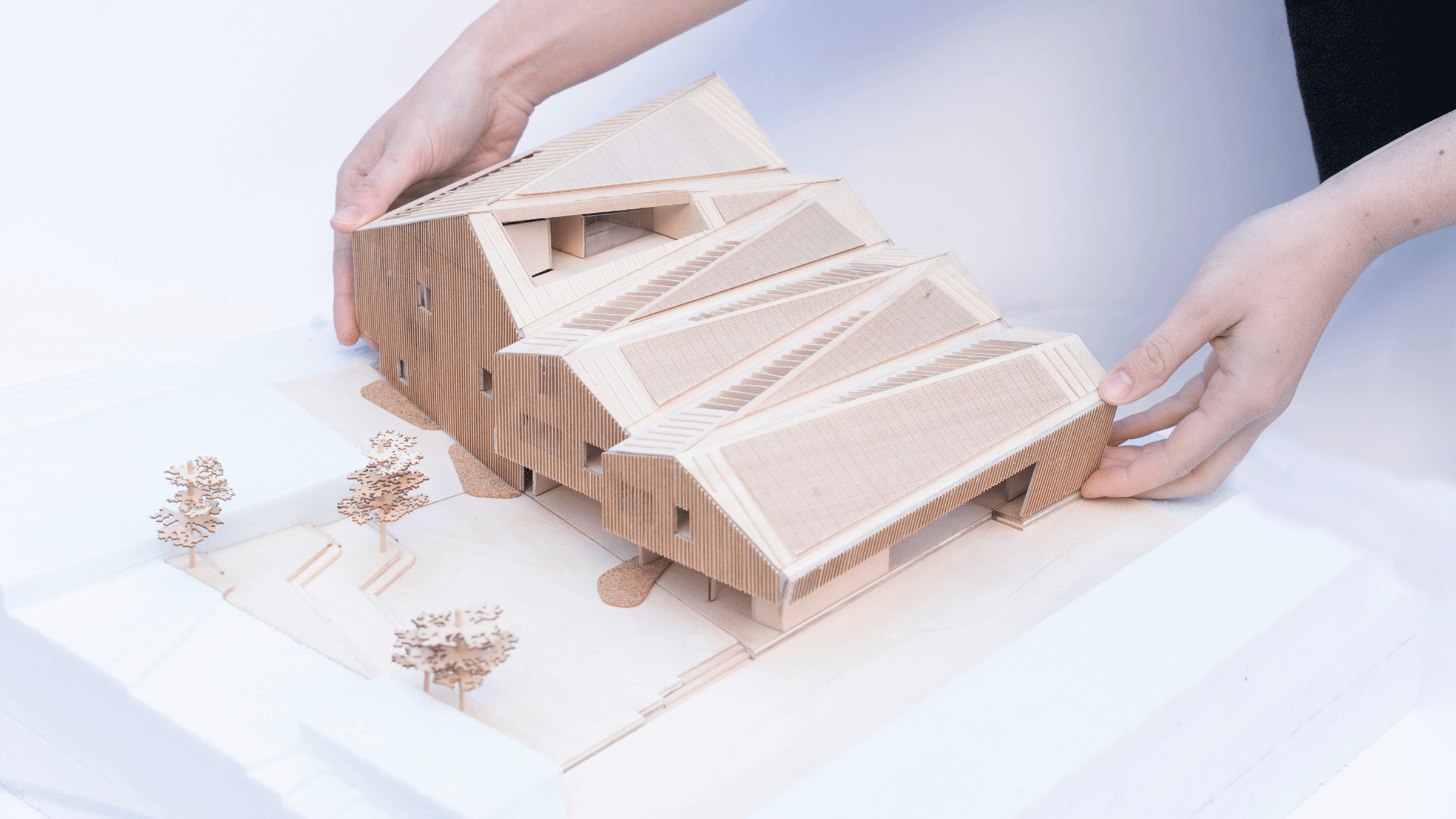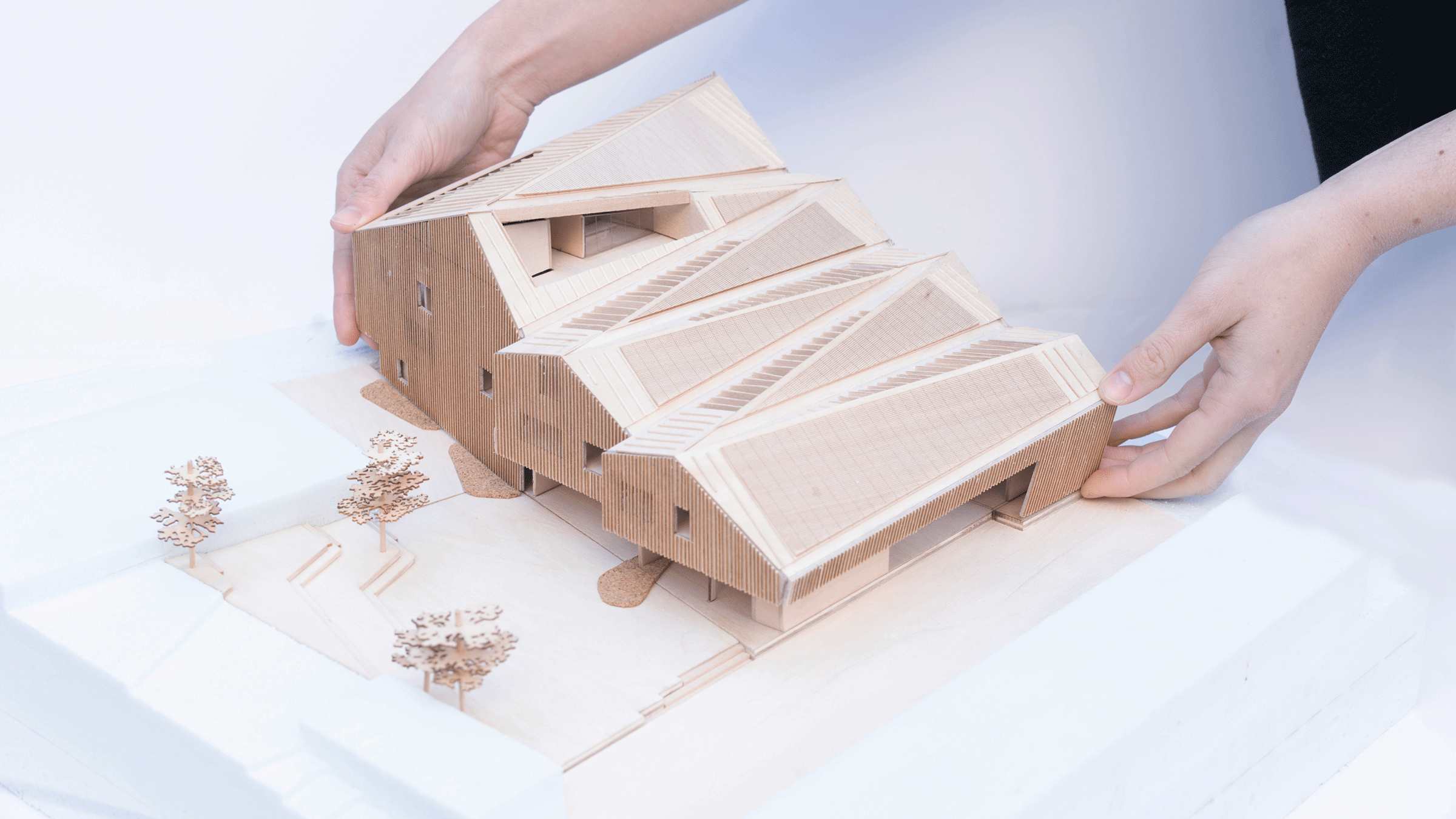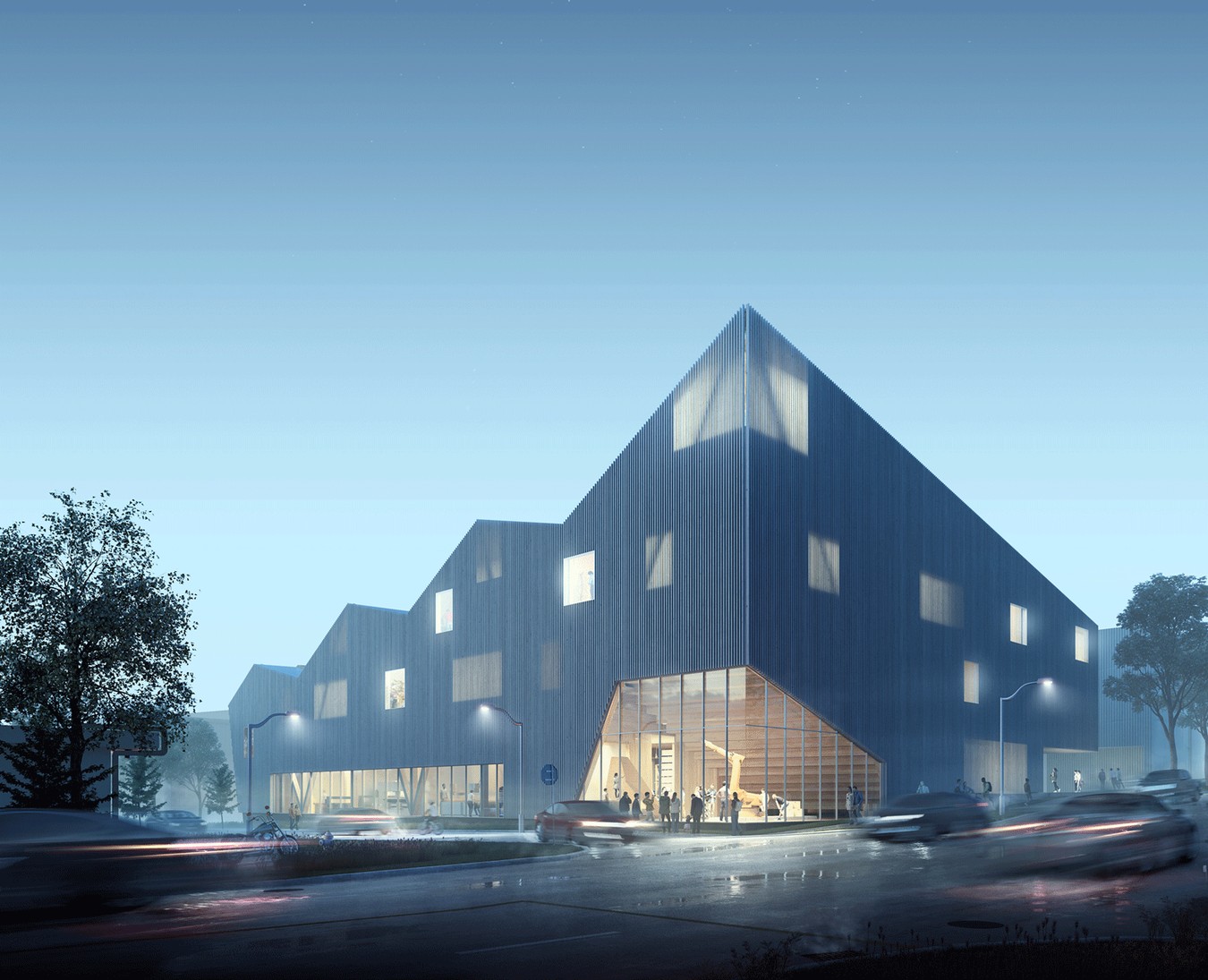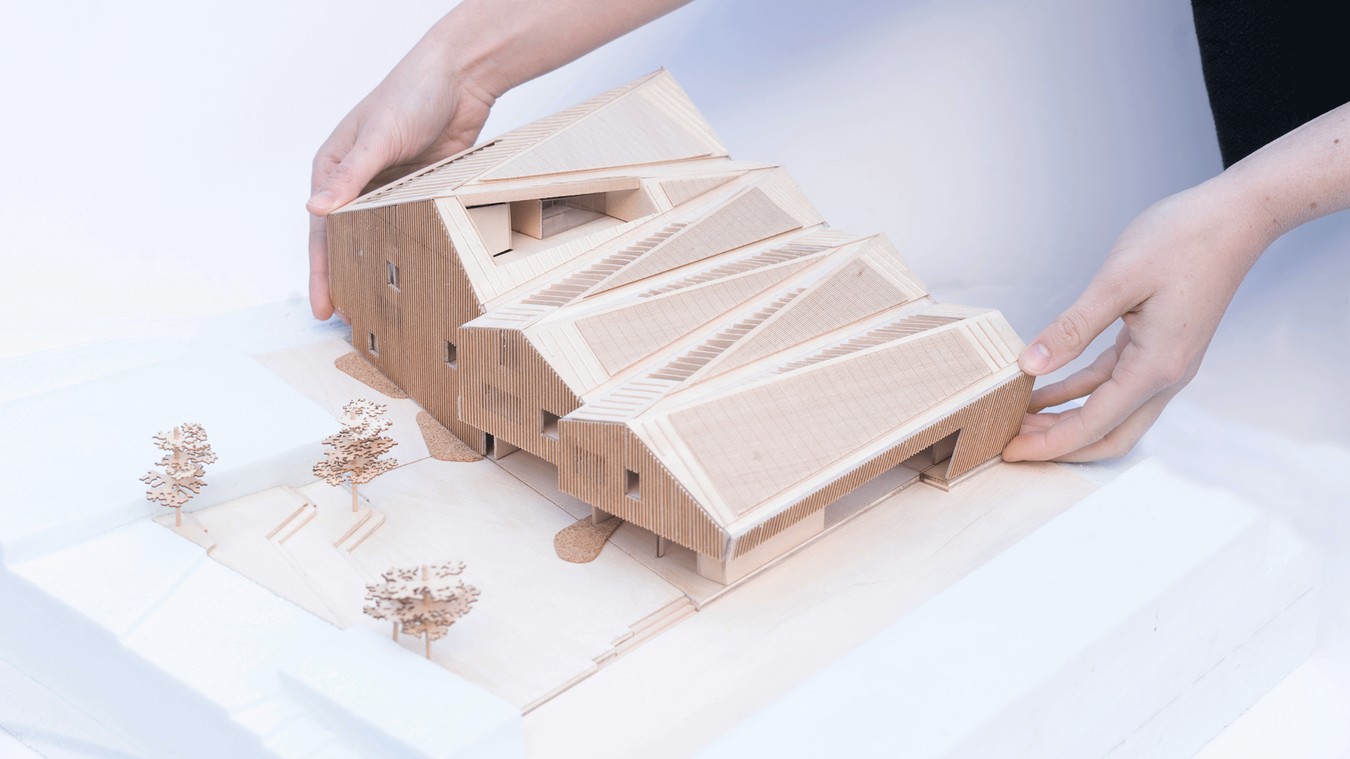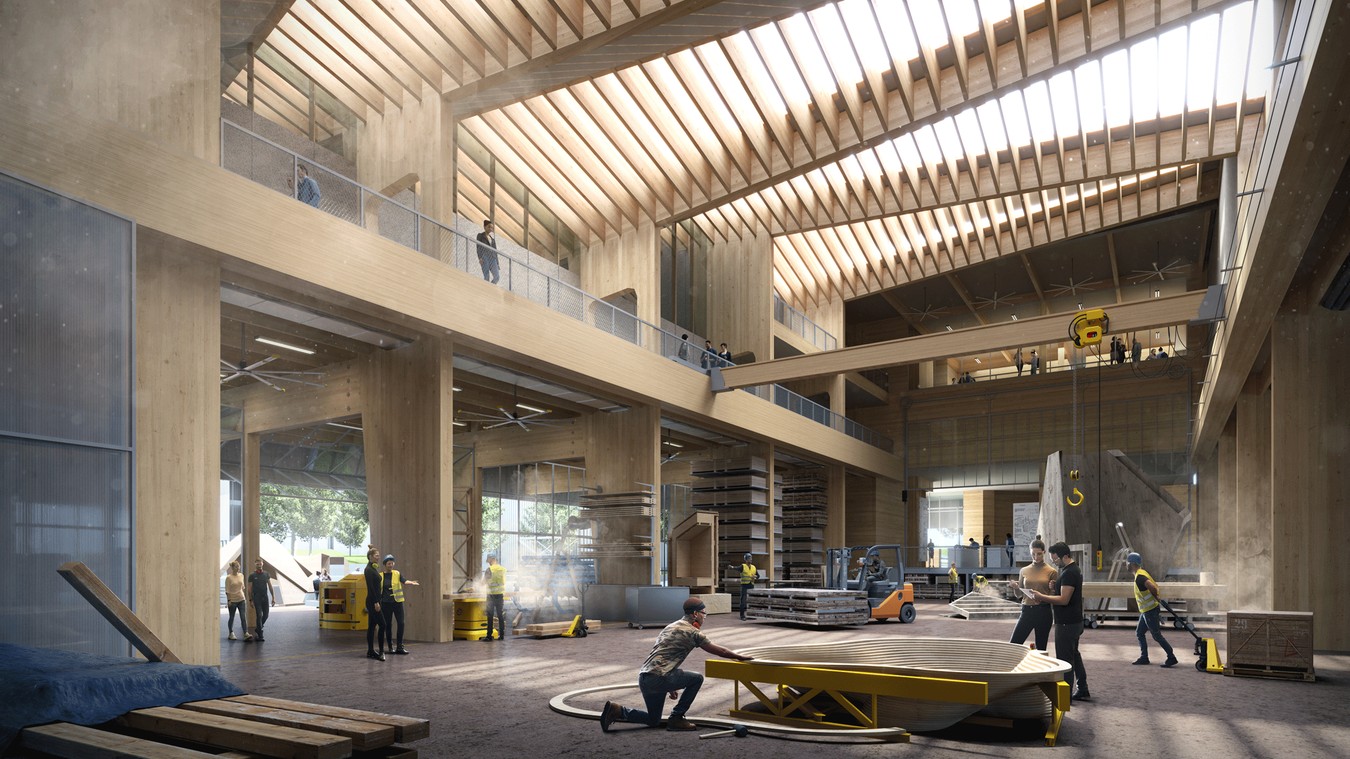Anthony Timberlands Center
New timber building for University of Arkansas
Location
Arkansas, USA
Status
Competition
2020
RIBA workstages
Concept
The design for this new university building promotes a symbiotic relationship between education, industry and the environment. Through the process of its design and construction, as in its role as an institution, the building will engage Arkansas’s most valuable and abundant forms of natural capital: its workforce and its regional ecosystem.
Drawing inspiration from Arkansas’s forested landscapes and its history of industrial and agricultural structures the design for this new academic centre has a pleated roofscape which channels rainwater into a system of constructed wetlands, functioning in much the way that the Ozark watersheds drain the range’s rocky ridges and forested piedmont.
A series of interwoven spaces within the building celebrate the logistics of material delivery, processing, and manufacture, their integration into academic research and experimentation, and their engagement of the public through the centre’s activities and events. Each space flows into the next and each is inflected and informed by its adjacencies. The weave of structure, spatial experience, and educational programme suffuses the building as it rises from the heavy rammed earth floors and trunk-like piers of the workshop up through the attic studios and library archive where daylight falls through a canopy of open rafter bays and slatted windows. Within this forest-like architecture, one’s sense of inhabiting an educational ecosystem is inescapable.
The organisation of the building’s surfaces maximises both active and passive environmental performance. Its southern sloping roofs are angled to optimise solar energy generation; its northern slopes are glazed as continuous skylights that illuminate and ventilate the building’s primary workspaces, reducing energy consumption. Overhangs to the south and west create covered exterior workspaces and shade the interior from midday sun, while vertical battens on the building’s exterior diffract sunlight to reduce solar gain and glare. In addition to these formal elements, super-insulated and breathable wall assemblies reduce seasonal heating and cooling, and timber-lined interiors absorb and release water vapour to buffer swings in internal humidity. Different uses and occupancies are coordinated mechanically to balance the varying levels of heating and cooling required, and optimise heat recovery and energy load-sharing.
